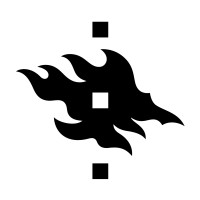Company Cyber Security Posture
NANA
NA Company Details
NA
NA
NA
NA
NA
NA
Scan still pending
NA
NA
Between 200 and 800
This score is AI-generated and less favored by cyber insurers, who prefer the TPRM score.
 NA Global Score
NA Global Score.png)

Company Scoring based on AI Models
| Model Name | Date | Description | Current Score Difference | Score |
|---|---|---|---|---|
| AVERAGE-Industry | 03-12-2025 | This score represents the average cybersecurity rating of companies already scanned within the same industry. It provides a benchmark to compare an individual company's security posture against its industry peers. | N/A | Between 200 and 800 |
Company Cyber Security News & History
| Entity | Type | Severity | Impact | Seen | Url ID | Details | View |
|---|
Company Subsidiaries

NA
Access Data Using Our API

Get company history
.png)
NA Cyber Security News
Student cybersecurity organization to host national Capture the Flag competition
CTFs are used in industry and academia to help participants develop and refine their cybersecurity skills in a safe, controlled setting. “ ...
Penn State Agrees to Pay $1.25M in Settlement for Cybersecurity Non-Compliance False Claims Act Allegations
Additionally, the settlement agreement alleges that for some contracts, Penn State failed to use an external CSP compliant with FedRAMP Moderate ...
Penn State fined $1.25 million for failing to meet cyber requirements in federal contracts
The school was accused of failing to implement cybersecurity controls between 2018 and 2023, and after acknowledging the issues it allegedly ...
Allegations of a Litany of Lyin’: Penn State Settles Claims of Cybersecurity Noncompliance
DOJ contended that Penn State knowingly misstated the dates it expected to implement required security controls, did not adequately document its ...
IST cybersecurity graduate named RSA Conference Security Scholar
The program, held annually as part of RSAC in San Francisco, connects select graduate students with cybersecurity experts, government leaders ...
Penn State pays DoJ $1.25M to settle cybersecurity compliance case
Filing a case on behalf of the government (known as a qui tam complaint), Matthew Decker alleged that his former employer never implemented ...
Penn State Settles for $1.25M Over Cybersecurity Violations
Pennsylvania State University (Penn State) has agreed to pay $1.25m to resolve allegations of failing to meet federal cybersecurity requirements ...
Student cybersecurity team places third in global competition
This final round provided students with two days of authorized hacking into their customer's network, with the goal of reporting the security ...
Brandywine student pursues passion for cybersecurity
Alok Ishwar, a fourth-year cybersecurity analytics and operations major, reflects on his Brandywine experience thus far and discusses how ...

NA Similar Companies

University of Helsinki
Working for the world Science has the power to change the world. Join one of the best research universities in the world – an international community united through bold thinking, science, research, and learning, with over 30,000 students and 8,000 employees. We are defined by our multidisciplina

Indiana University Bloomington
Indiana University Bloomington is the flagship residential, research-intensive campus of Indiana University. Its academic excellence is grounded in the humanities, arts and sciences, and a range of highly ranked professional programs. Founded in 1820, the campus serves more than 42,000 undergradua

University of Minnesota
One of the nation’s largest schools, the University of Minnesota offers baccalaureate, master’s, and doctoral degrees in virtually every field—from medicine to business, law to liberal arts, and science and engineering to architecture. The University of Minnesota system is made up of five campuses

Louisiana State University
LSU is the flagship institution of Louisiana and is one of only 30 universities nationwide holding land-grant, sea-grant and space-grant status. Since 1860, LSU has served its region, the nation, and the world through extensive, multipurpose programs encompassing instruction, research, and public

University of Florida
University of Florida is a major, public, comprehensive, land-grant, research university. The state's oldest, largest and most comprehensive university, it is among the nation's most academically diverse public universities. University of Florida has a long history of established programs in interna

The Johns Hopkins University
We are America’s first research university, founded in 1876 on the principle that by pursuing big ideas and sharing what we learn, we can make the world a better place. For more than 140 years, our faculty and students have worked side by side in pursuit of discoveries that improve lives. Johns Hop

Frequently Asked Questions
Explore insights on cybersecurity incidents, risk posture, and Rankiteo's assessments.
NA CyberSecurity History Information
How many cyber incidents has NA faced?
Total Incidents: According to Rankiteo, NA has faced 0 incidents in the past.
What types of cybersecurity incidents have occurred at NA?
Incident Types: The types of cybersecurity incidents that have occurred include .
Additional Questions
What Do We Measure?
















Every week, Rankiteo analyzes billions of signals to give organizations a sharper, faster view of emerging risks. With deeper, more actionable intelligence at their fingertips, security teams can outpace threat actors, respond instantly to Zero-Day attacks, and dramatically shrink their risk exposure window.
These are some of the factors we use to calculate the overall score:
Identify exposed access points, detect misconfigured SSL certificates, and uncover vulnerabilities across the network infrastructure.
Gain visibility into the software components used within an organization to detect vulnerabilities, manage risk, and ensure supply chain security.
Monitor and manage all IT assets and their configurations to ensure accurate, real-time visibility across the company's technology environment.
Leverage real-time insights on active threats, malware campaigns, and emerging vulnerabilities to proactively defend against evolving cyberattacks.




